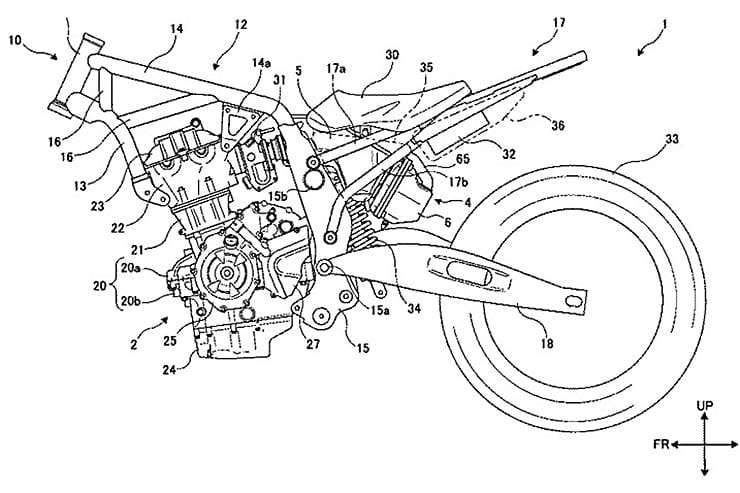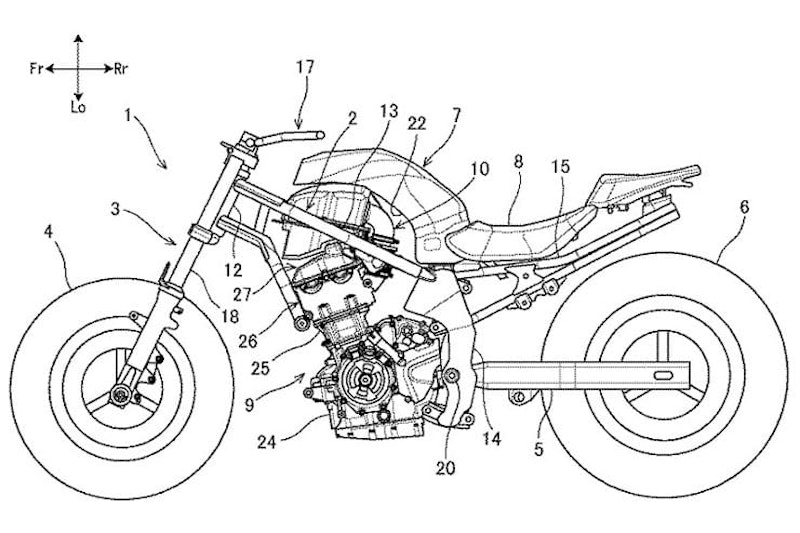Suzuki 700cc parallel twin is nearly here
By Ben Purvis
Motorcycle Journalist
30.08.2022
Suzuki has had a very barren few years when it comes to completely new bikes – the last clean-sheet design to emerge was arguably the 2017 GSX-R1000 – but that’s about to change with a new 700cc parallel twin platform that will start with an adventure bike to rival Yamaha’s Ténéré 700.
It’s been a very long time since the first hint at the new project appeared in the form of the turbocharged Recursion concept bike, shown back in 2013 at the Tokyo Motor Show. That was a 588cc, single-cam machine with a low-pressure turbo boosting it to 100hp, but two years later a development of the engine – dubbed XE7 – was shown at the 2015 Tokyo event. It still bore a turbo but was upped to 700cc and gained twin camshafts for a more performance-focussed design. Since then we’ve seen an endless flow of patents showing both turbocharged and normally-aspirated developments of the engine mounted in an array of different frames including sports bikes and adventure-style machines.
Now, though, a near-production prototype has been spotted on test on Italy’s Stelvio Pass, revealing that the engine’s first showroom appearance will be in an adventure bike that’s clearly designed to replace the V-Strom 650 and to challenge the Yamaha Ténéré 700. You can see the photos on the website of Italian magazine Motociclismo.
It’s a machine that will face an incredibly tough market to break into. As well as the Ténéré 700, the new Suzuki – which appears to be non-turbo and hence good for around 75hp – will be challenged by the much-rumoured Honda Transalp 750, which is expected to appear soon using the same high-revving 750cc parallel twin that Honda will debut in the 2023 Hornet roadster.
There’s a European contingent to compete with in the form of KTM’s 890 Adventure and BMW’s F750GS and F850GS, not to mention Aprilia’s Tuareg 660 and the forthcoming Norton Atlas 650 models, and from Japan Kawasaki has long been in the same market with the Versys 650.
The switch from a V-twin to a parallel twin means a few things. It should make for a lighter, more compact bike, and one that’s cheaper to manufacture. Parallel twins have half the number of cylinder heads and camshafts, as well as simpler cam drive systems, compared to V-twins, and it’s easier to package and route the intakes and exhausts. Suzuki is likely to have chosen a 270-degree crankshaft design to mimic the firing intervals and sound of a V-twin, making the engine the best of both worlds.
On the initial, V-Strom-like machine (the name remains a question – can Suzuki call it a ‘V’ Strom if there’s no ‘V’ engine?) there are long-travel USD forks, wire wheels with a 21-inch front and 18-inch rear, and styling that’s very much aligned with the neo-retro looks of the existing V-Strom, harking back to the old DR Big.
However, the adventure bike is just the first model to appear on the new platform. Eventually, Suzuki’s line-up is expected to include a roadster and even a sports bike using the same engine – essentially replacing the long-running SV650 with a parallel twin alternative in both naked and faired forms.
It’s also clear that Suzuki has put a lot of work into the development of a turbocharged version of the same motor (below). That’s the really intriguing one, as it could give the company a path to a new sports bike that essentially replaces the GSX-R600 and GSX-R750, but with the USP of a turbo instead of the usual four-cylinder layout. It’s a solution that should allow performance aligned with the old, high-revving fours, but with much more torque and a lower-revving engine that makes meeting Euro 5 emissions limits easier. Don’t expect such a machine in 2023, but it’s something that could be on the horizon for 2024 or 2025.
Share on social media:

